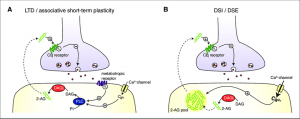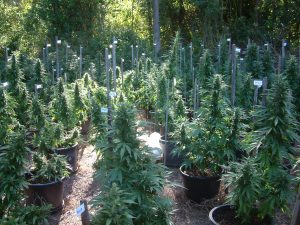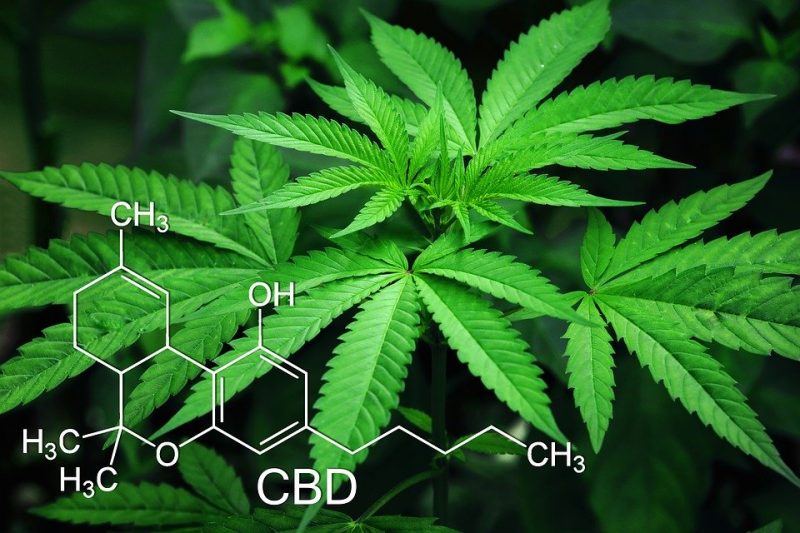To legalize or not to legalize?
That is the question that often comes to mind when we see that all-too-distinct 7-point leaf. The use of marijuana, or cannabis, has remained a controversial topic in the States over the past years. Whereas some see legalizing cannabis as a stinkingly massive, scary issue, others see it as a sort of “Miracle Drug” – one that has potentially beneficial, yet often overlooked uses. With a nation that’s become keen on broadcasting the dangers of the drug war and “gateway” substances whilst preaching “Pugs Not Drugs” to children (starting as early as elementary school), it becomes quite easy to see how stigmas grow and understand why many often jump to believe the former argument. But without getting lost in the ‘weeds’ – that is, outside of the social stigma, the politics, and the stereotypical associations that come with any type of cannabis use – does cannabis have physiological benefits that would warrant it as the Miracle Drug that many claim it is?
Without further ado, let’s delve into some of the recently researched science behind this Miracle Drug and see if it really does hold up to its controversial nickname.
Weeding Out The Fluff – Endocannabinoids and the Body
Down to core, cannabis is a drug – a chemical that has affects on the body. Claims that cannabis can be used to treat seizures, cancer symptoms, and even neurodegenerative disorders stems from the particular effects it causes. Throughout the body, there is widespread distribution of a special type cell receptor, called an endocannabinoid receptor (CB1 and CB2, two subtypes of CBRs, for short), and CB1 receptors are especially common in the brain. Normally, the body produces lipid-based, endogenous, cannabinoid-like substances called endocannabinoids, which help regulate some processes that occur in the brain via interactions with these receptors (yes, your body synthesizes biological CBD). Thus, plant-derived cannabinoids and synthetic cannabinoids can also interact with these CBRs and produce similar effects. But to understand these, it’s first important to look at what the effects of endocannabinoids.
What are these effects? Because CB1 is so widely dispersed, it can be hard to pinpoint just one. To the right are a few of the many affects cannabinoids can have throughout the body:

But let’s talk about the brain. Normally, CB1 receptors are found on the surfaces of neurons, in especially high concentrations within portions of the brain dedicated to memory, such as the hippocampus. Now for some basic neuroscience. Many types of neurons can be divided into two basic classes: excitatory and inhibitory. Excitatory neurons release communicating molecules, neurotransmitters, to the next neuron. These neurotransmitters are (you guessed it) excitatory, in that they excite the next neuron so it can fire a signal off to whatever its target is – another neuron, a cell, a muscle, you name it. Inhibitory neurons also release neurotransmitters, but in contrast these prevent, or ‘inhibit’ the next neuron from firing or cell from acting, living up to its name. For a basic rundown of excitatory and inhibitory neurotransmitters, check out this video:
Cannabinoids enter the scene in synapses, the space between two neurons where the previous neuron releases its neurotransmitters into, in order for the second to receive and respond to them. From there, they can perform two different feedback processes, depending on the type of neuron (excitatory or inhibitory) – Depolarization Induced Suppression of Inhibition (DSI) or Depolarization Induced Suppression of Excitation (DSE). Though these might sound complicated, their names basically give away their action. Here’s a simplified rundown of DSI:
- After being activated (in neuroscience terms, ‘depolarized’) the first neuron, an inhibitory neuron, releases inhibitory neurotransmitter (such as GABA), into the synapse.
- The inhibitory neurotransmitter prevents the downstream neuron from firing by binding to its respective receptors on this neuron. This binding induces a series of biochemical events that makes the neuron much less likely to fire.
Still with me? Up to this point, the first neuron has quite literally inhibited the second neuron. But we don’t want this to last too long – neurons have to fire at various levels in order to carry out their function, form memories, and communicate! So what happens next?
- Over time, high-frequency inhibitory firing from the first neuron activates regulatory calcium channels on the second neuron, so calcium enters the second neuron.
- Increased calcium concentration activates an enzyme in the downstream neuron, called phospholipase C (PLC).
- PLC takes phospholipids from the cell membrane and creates diacylglycerol (DAG)
- Another enzyme, DAG Lipase, acts on DAG to create whoolah…

A substance called 2-AG. This is that biological endocannabinoid. What does it do next?
- 2-AG is released back into the synapse, from the downstream neuron, as a “retrograde” (backwards communicating) signaling molecule.
- The endocannabinoid reacts with our friends, the CB receptors, on the first neuron.
This can set off a variety of chemical cascades, but ultimately it results in less inhibitory neurotransmitter being released. So what happens when you stop inhibiting the second neuron? It is allowed to fire. Thus, the process lives quite literally up to its name – a “Depolarization (Firing) – Induced Suppression of Inhibition.” If you could guess, a DSE does practically the same thing, except the first neuron is excitatory, so suppressing it would lead to more inhibition and less firing of the second neuron (although DSI is more relevant when talking about CBD). These processes are important in making sure signals don’t run too rampant, or the brain isn’t inhibited for too long, but they are relatively short-lived and thus don’t cause any significant changes in the brain. If you’re more of a visual learner, here’s the entire process in one lovely diagram:

Putting the ‘Can’ in Cannabis – Beneficial Uses for CBD

So back to cannabis – when you put more endocannabinoid analogs into the synapse for longer periods of time, what happens? Well, depending on whether the process is DSE or DSI, there could be too much or too little excitation or inhibition in various parts of the brain, which could have various effects. Sounds very vague, and it is, but then again it’s nearly impossible to pinpoint what specific part of the brain CBD acts in at one moment in time, and thus what downstream effects are attributed to it (in part due to the widespread nature of CB receptors). Some of the effects are pictured above, but because of the neuro-basis mechanism of cannabis, it’s come into the light of neurodegenerative disease treatments.
Wait a minute, isn’t cannabis psychoactive? How can it be used to treat some of the most vulnerable patient population? In reality, synthetically created CBD is often contaminated with other chemicals and does NOT contain THC, making it a full agonist (interacts fully) with CB receptors and to some extent producing unpredictable and more intense effects. On the other hand, what is often considered “medical marijuana” is plant-derived and exists in the more pure phytochemical state. This form contains THC, making it only a partial agonist for CB receptors, thus producing milder, more natural effects that would normally happen when the body produces endocannabinoids. Here are some potential benefits CBD CAN hold for specific patients:
- Parkinson’s Disease: In this degenerative disease, neurons that release regulatory neurotransmitter dopamine are damaged over time. Dopamine is largely excitatory, and is important in maintaining smooth motor movement. Thus, using CBD to induce DSI (allow for more excitation in the brain) can make up for some of the excitation lost from losing dopaminergic neurons.
- Alzheimer’s and Cognitive Decline: A disease marked by slowing memory and mental ability, neurons in areas of the brain relevant to memory are damaged over time in Alzheimer’s. Because they are damaged, they cannot fire the usually excitatory neurotransmitters (such as glutamate) needed for learning and forming new neuronal ‘connections’ (synapses!). Using CBD can again induce DSI and increase excitation in these parts of the brain, potentially improving cognitive ability.
- Seizures and Epilepsy: Though not directly CBD, a similar derivative of CBD called cannabidiol with lower affinity for CB1 and CB2 receptors has been found to be effective in reducing seizure activity. It is suspected that this derivative “counteracts” DSI, producing less neuronal activity and activation, which could play into reduction of the overactivity seen in many seizure cases. The research can be found here.
And that is definitely not all. Patient cases where CBD has been used to treat anything from pain to cancer-related appetite loss have shown increased quality of life for the users. Nonetheless there is still much research to be done in order to fully discover the mechanisms and reasons behind the beneficial findings detailed in the papers above. However, as marijuana is currently a Schedule 1 drug in the US (a completely different issue I won’t get into today), conducting adequate research on CBD is extremely difficult, and with that the “Miracle” remains unknown for much of society.
On its own, marijuana doesn’t sound so bad – research exists that shows its pure derivative can treat anything from general pain to ultimately fatal neurodegenerative disorders. What’s standing in the way? It’s a complicated, multi-faceted issue that brings into play politics, social stigma, elementary education, and the policies of our current drug industry, and I can say that we are a long way from changing. Who knows, maybe a future with cannabis isn’t such a bad thing. But until word on the street starts welcoming discussion of this Miracle Drug, I guess ‘weed’ never know.

